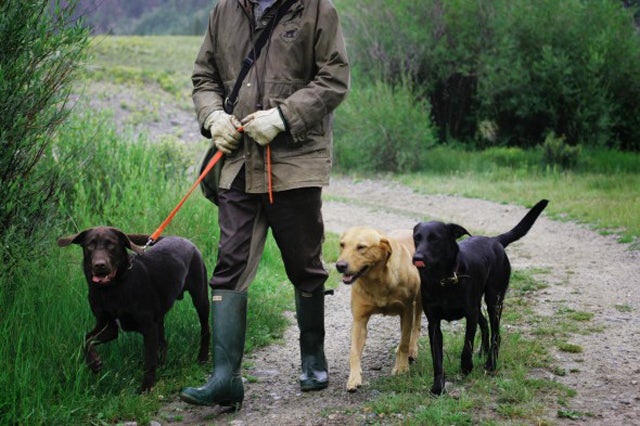A civil, well-mannered dog must learn early on to have patience while walking on a loose lead—no pulling, jumping, or ground sniffing. He’ll need to negotiate any obstacles you’ll encounter—logs, ditches, embankments—without hesitation or interference. And he must work with an eye constantly on you for leadership and direction, regardless of distractions. Perfect the on-lead heel and you can move to the ultimate goal: A dog that will heel off lead without constant corrections or reminders. Here’s how to get started.
The Ultimate ���ϳԹ��� Companion
All you need to know about going wild with man’s best friend.1. Decide whether you want your dog to heel on your right or left side. Then be consistent. No switching sides. Start all of your training drills from this position from now on.
2. Start your heeling lesson on pavement, which does two things. First, it gives your dog a straight line to guide him (this is helpful later in retrieving). Second, pavement doesn’t have all of the interesting smells of a field that will break your dog’s concentration. Sniffing equals avoidance. Your dog’s concentration must be on you.
3. Use a slip collar that produces a popping sound when the lead is snapped quickly. The classic, simple choker-style chain collar works well, but lately I’ve been using these that slide more smoothly and use dot tread to give you a bit more control. Use a pronged pinch collar only on the wildest dogs. (I don’t recommend these to beginning trainers.) Also, forget those chest harnesses and collars with nose loops. They don’t correct pulling and may actually promote it. All you need is a simple slip collar.
4. Have your dog sit. Say his name. When he makes eye contact, say “heel,” (once, only) and set off at your pace, not his. It’s much more difficult to get a pup to heel slowly than to pretend he’s heeling by quickening your pace to keep up with him. Go slowly. Don’t keep repeating “heel” as a correction. You’ll only add confusion.
5. When your dog tries to walk ahead, lag behind, or wander off, quickly change direction and pop the lead as a correction. That popping sound and sideways jerk mimic the bite of the pack. Changing direction shows him that you’re picking the route and he needs to pay attention to you to avoid correction. Your pup learns to stay in place gradually rather than being pulled into place constantly.
6. To start moving to an off-lead heel, drop your lead and let it drag. If you need to regain control, just step on the lead.
An obedient heel, both on- and off-lead, is a must for any dog that’s going to accompany you out in public. Short lessons should begin when your dog is as young as eight weeks old but, no dog is too old to start. Old dogs can surely learn new tricks.
This article originally appeared on ���ϳԹ��� K9, the former dog blog of ���ϳԹ��� magazine, on March 30, 2009.


